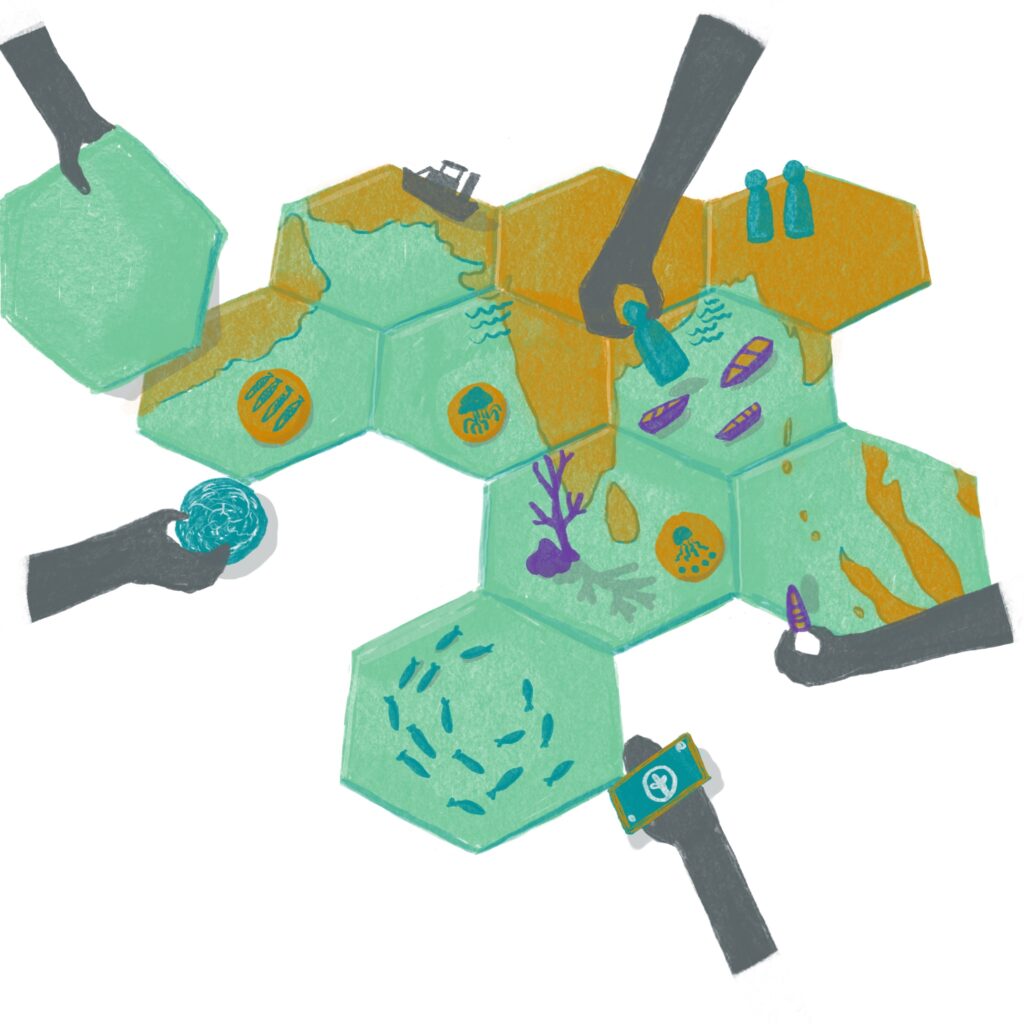I’m not going to lie, I am bonkers for bats. I can point to three bat-related experiences that have piqued my curiosity and tugged at my wonderment. These experiences helped teach me that bats are fascinating, they benefit all of our lives, are an essential part of the ecosystem, and need our help now. Though some of my stories might have some saying “no, thank you”, I hope that by the end you share my appreciation for the coolest creatures ever.
Up Close and Personal
I grew up in the middle of nowhere, the kind of town where you have to drive a few miles to get to the nearest grocery store and walk ten minutes to get to the next house over. One day my family and I returned home to find a little brown creature in the stairway. It was fuzzy, had a small snout, little black eyes, and large ears. At first glance, I thought it was a mouse, but after closer inspection, I could see wings! This little bat got stuck in our house, and my mom donned some gloves to scoop it into a container. Feeling sorry for the little bat, I put a piece of banana in the container. Of course, since all bats in the Pacific Northwest—and almost all bats in North America—are insectivorous, the bat didn’t even touch the banana. When evening came we put the container outside, left the lid off, and within an hour, it flew away. This was the first time I had ever seen a bat up close, and to me, it didn’t seem so scary.
If you ever come across a bat somewhere it shouldn’t be, contact your local wildlife agency or rehabber. If you absolutely need to move it, make sure you wear gloves or find ways to collect the animal using a box to keep you both safe. There are a lot of mysteries about our bat populations so if you find a colony of bats, report it to your local wildlife agency. This could fill in gaps in knowledge about our local species.
In reading this you may be wondering, aren’t bats dangerous? What about rabies? Viruses? Even COVID-19? Bats are thought to be rabid, but it is very rare for a bat to have rabies, and even more rare for a bat to infect a person. Usually, when someone is bitten it is because they picked up the bat without precaution and the bat is trying to defend itself. In the U.S., if a bat bites a human the bat must be tested for rabies. Testing for rabies requires killing the bat, whether or not the bat is sick.
COVID-19 is believed to be a zoonotic disease that originated from an animal and has yet to be determined which animal or species it spread from. A few species of bats and other animals have been found to carry similar coronaviruses, which makes them suspected culprits. However, you cannot get COVID-19 from any North American bats. Blaming bats and eradicating or killing them will not solve issues of the current or any future pandemic. Humans are putting themselves in danger by destroying natural habitats and bringing wild animals in close contact with themselves and other animals. Bringing together different species in an unnatural and stressful environment, such as live and wet markets, give viruses new opportunities to spread.
Considering other viruses or diseases, bats should not be feared but learned from. They have incredible immune systems that work differently from humans’. When bats fly, their body temperature rises to what would be considered a fever for humans, then their temperature plummets when they torpor, or hibernate. This makes it very difficult for a virus to survive because it must endure such a wide range of temperatures within a 24-hour period. This is thought to be one of the reasons bats live unusually long for their size.
Currently, in North America, a disease called Whitenose Syndrome (WNS) is devastating whole colonies of bats. The disease is caused by a fungus called Pseudogymnoascus destructans (Pd) that attacks bats while they are hibernating. This disturbance awakens infected bats during the winter when there are little or no insects available to eat. This depletes their fat stores, causing the bats to starve to death. Finding a bat during this season is especially important to report to your local wildlife agency. If WNS is the culprit, they will be able to gather more information about the disease. People do not have to worry about getting sick from WNS, but they should worry about accidentally spreading it. If you go into caves or near colonies it is important to clean and sanitize any clothes, equipment, or shoes between locations. It is thought that people are responsible for the spread of Pd from Europe to North America and across state lines. It seems that bats should fear people and not the other way around.
I Can Hear You but I Cannot See You
Bats are difficult to research. They are nocturnal, have the ability to fly very far, very fast, and many bats roost in inconspicuous spaces. Their unpredictable flight pattern while chasing insects makes it difficult to observe a single bat for longer than a few seconds. As night falls, it becomes difficult to see bat silhouettes zigzagging against the darkening sky. This poses the question, how do they see with no light? Bats are not blind nor do they have superb eyesight. So, what is their biological version of night vision goggles? They have something better: the ability to echolocate.

Historically, people would shoot bats with shotguns to study them. Nowadays a great way to learn about bats is through detecting their echolocation calls. Echolocation allows bats, and a few other animals, such as dolphins and shrews, to project sound that will bounce off objects like echoes. These echoes return and are translated by skillful ears into a sort of image. With this, a bat can determine how far away an object is, how big it is, and even what it is. Even though bats use sound to depict their surroundings, we cannot hear them because the series of chirps (or calls) most bats produce are at a higher frequency than humans can hear. Bat detectors are devices that translate the calls into a lower audible frequency. In some cases, knowing the frequency and waveform shape of the call is enough information to identify the species of bat.
To further my studies in the field, I went out with a bat detector to listen for bats. Recording calls cannot tell us how many bats are in the area, but it can tell us if bats are present. Bats are often associated with caves or forests, but did you know that some bats live in or frequent large cities? I recorded bat calls within the city of Seattle with an Echo Meter Touch, a bat detector that plugs into a smartphone. The accompanying app by Wildlife Acoustics identifies the species of bat in real-time. I recorded a silver-haired bat, big brown bat, and little brown bats all of which are known to live in the Seattle area. The neat thing about bat detectors is that when you are listening to the bats, you are not disturbing them and it allows you to ‘see’ them in the dark when you cannot watch them.
Grumpy Faces and Angry Squeaks
By far the most exciting experience I ever had was a class field trip to Dusty Lake. Before this I liked them, but this was the moment that I really fell in love with bats. In the evening we set up a mist net trap above a small stream. A mist net resembles a very thin volleyball net with pouches which allows scientists to safely get their hands on bats (or birds). In practice, a bat will fly into the net and become stuck in a pouch. The researcher will free the bat, take measurements and notes on each individual captured. Carefully handling the bat allows for detailed data gathering, species identification, and leaves them unharmed, if not a little upset.
I had seen a bat up close before, but nothing compared to watching the interaction between my professor and the bats. My professor did all of the work while the rest of us watched in awe. As the bat was being handled it made a little grumpy face, let out a series of small frustrated squeaks, and struggled like mad to escape. Once my professor was done, he would place the little bat either in the breast pocket of his shirt or on top of his shoulder. Lo and behold the bats would just hang out—no more anger, no more squeaking, they just sat on him until they were ready to go, and then they would just fly away.
Observing these small creatures at close quarters eliminated any and all fears I ever harboured. As I did more research, I learned bats are more similar to humans than most people would think. Bats are social animals and have a sense of community. They have been found to share food and in some cases will adopt pups who lost their mom. Bats are not the evil beings they are advertised to be in movies and horror stories but are magnificent hard workers, who just happened to get stuck with the graveyard shift.

The Takeaway
You may wonder where you can see bats. Well, bats are everywhere! Or, almost everywhere. Bats live all around the world, except for in very cold climates such as Antarctica. There are over 1,400 species of bats worldwide, which are split into two groups: the microbats and megabats. Microbats are echolocators, tend to be smaller and eat a variety of prey, depending on the bat species. This includes anything from insects, scorpions, fish, nectar, and even blood. All bats in North America are part of this group, with the vast majority being insectivores. Megabats, on the other hand, tend to be larger, have better eyesight, a better sense of smell, and smaller ears in comparison. These bats are also known as the Old World fruit bats and primarily consume fruit and nectar. Their fruit eating habits actually help reforest lands by planting new trees. By eating fruit and pooping out the seeds as they fly, species of megabats disperse the seeds of mangoes, figs, bananas, and avocados, making them vital to the production of many of our favorite commercial fruits.
If you would like to observe a wild bat, just pop out around sunset and look toward the sky. Bats are most active during warmer months, and if you want to increase your chances, head to a body of water such as a lake or stream. If you are really lucky, and you happen to be near a bat colony, you might be in for quite a sight. The largest known colony—and largest known mammalian congregation—resides in Bracken Cave, Texas. Here you can watch millions of Mexican free-tailed bats exiting the cave together. There are many areas with large colonies of bats, and with a little research you might find one close to you.
All bats are incredibly important to both the ecosystem and people. They pollinate plants, disperse seeds, and eat an unfathomable number of insects. Bats need to be a high priority in research so we can learn how best to conserve them. Further, bats do not only need support from scientists, but they need support from you and me. If you are a fan, share your enthusiasm, tell your friends and family. Physical actions can also be taken, like preserving snags (dead trees) for homes, restoring native vegetation and habitat, planting night-blooming flowers, keeping your cat indoors, or joining a citizen science project to study bats yourself. Some ongoing citizen science projects include the Long Island Bat Watch, the Spotted Bat Project hosted by Oregon State University, and Neighborhood Bat Watch throughout Canada. There are many ways to help bats no matter where you live, how old you are, and what you do. Stand up for those who hang upside down and give them the support they need.
Further Reading
Gorbunova, V., A. Seluanov, and B. K. Kennedy. 2020. The world goes bats: living longer and tolerating viruses. Cell Metabolism 32(1): 31–43.
Hoyt, J. R., A. M. Kilpatrick, and K. E. Langwig. 2021. Ecology and impacts of white-nose syndrome on bats.
Nature Reviews Microbiology 19: 196–210.
Konda, M., B. Dodda, V. M. Konala, S. Naramala, and S. Adapa. 2020. Potential zoonotic origins of SARS-CoV-2 and insights for preventing future pandemics through one health approach. Cureaus 12(6): 1–9.






